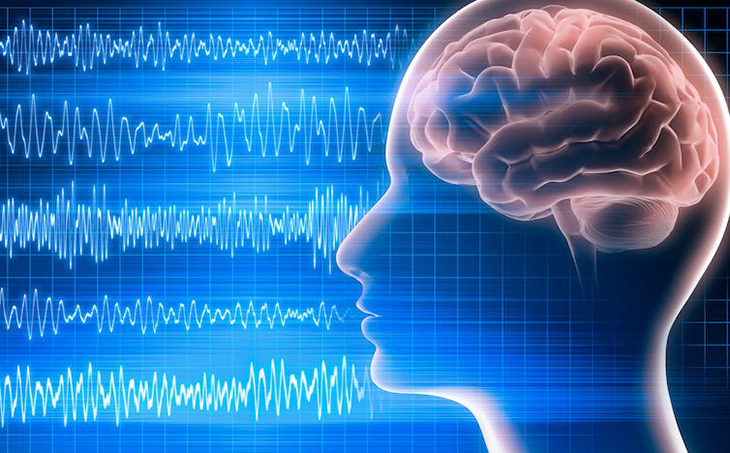
When the heart ceases its beating, the brain may undergo a surge of activity in an area frequently linked to profound spiritual or religious encounters. Researchers have unearthed additional evidence that could shed light on near-death experiences, encompassing phenomena such as visions of celestial light and apparitions of departed loved ones.
Have you or an acquaintance ever encountered a near-death experience (NDE)? These occurrences are estimated to transpire in around 10 to 20 percent of individuals who survive cardiac arrests. These survivors often recount encounters with luminous illumination, auditory sensations, or even meetings with deceased cherished individuals.
Despite their prevalence, the origins of these perceptions have remained an enigma.
In a recent study published on May 1, 2023, within the Proceedings of the National Academy of Science, a breakthrough emerges. The study provides what is being heralded as “the most compelling evidence to date” indicating the persistence of a form of concealed consciousness for a brief period subsequent to cardiac arrest, a point at which conventional understanding deems an individual deceased. Lead author Jimo Borjigin, PhD, an associate professor at the University of Michigan Medical School in Ann Arbor, within the departments of molecular and integrative physiology as well as neurology, suggests that this concealed consciousness lingers during a time when the heart has ceased to beat and responsiveness has ceased, highlighting the complexity of the phenomenon.
Referred to as covert consciousness, this state denotes the presence of internal indicators of awareness and cognitive activity within the brain, as evidenced by EEG assessments, despite the body’s lack of response. As many as 15 to 20 percent of individuals who appear to be in a comatose state exhibit signs of covert consciousness, according to Scientific American.
The recurring traits found in various near-death experiences raise the intriguing possibility of an underlying reality uniting them, as pondered by the authors.
Although most may wonder what takes place after death, little is actually known, said Dr. Borjigin. “When I first began studying the brain over a decade ago, I was shocked to find out we know so little about the entire process — what is happening to the heart, brain, and lungs to a person when they are dying,” Borjigin explained.
All About Brain Waves and Memory
Borjigin and her team’s research is a continuation of prior animal studies carried out nearly a decade ago, in partnership with George Mashour, MD, PhD, who established the Michigan Center for Consciousness Science.
During that earlier investigation, scientists examined electroencephalogram (EEG) recordings of nine anesthetized rats that were subjected to experimentally induced cardiac arrest.
In the initial half-minute following the onset of cardiac arrest, every rat exhibited a brief yet expansive spike in meticulously coordinated brain activity. This surge encompassed various brain regions and involved the presence of gamma waves, a distinct form of neural activity.
But why it so significant? “We have brain waves going on in our brain all the time — they don’t stop. The question is: When do they increase and when do they happen? How can we correlate them with certain behaviors that we do,” said Ajmal Zemmar, MD, PhD. He is a neurosurgeon and researcher in death and near-death experiences at University of Louisville Health in Kentucky. He also was not part of the research.
One connection that brain researchers have made is with gamma waves, Dr. Zemmar said. “If someone were to put an EEG on our head and show us pictures and videos of memorable events of our lives — such as the birth of a child, a wedding day, a day somebody that we loved passed away — and we recall those events, gamma waves go up. So people believe that the presence of increased gamma waves activity is the way for the brain to recall memory,” he explained.
Following its observation in rats, the subsequent phase involved investigating whether this phenomenon occurred not only within the rat species but also extended to humans.
In the previous year, Zemmar spearheaded a team of scientists that revealed a similar occurrence of these gamma waves a few seconds after the cessation of the heartbeat in humans. These findings, published in Frontiers in Aging Neuroscience in February 2022, aligned with the outcomes observed in rats.
Evidence Points to Death Not Happening After Heart Stops
“People always think when the heart stops beating, we’re dead. This is what we see in movies, when the EKG sign goes flat. What this research opens is: Maybe we’re not [dead yet]? Because the brain pulls off pretty coordinated activity after the heart stops,” Zemmar said.
The recent research conducted by Borjigin validates the findings of the two preceding studies. It reaffirms the observation that gamma waves exhibit heightened activity following the cessation of heart function, and additionally sheds more light on the potential implications of this activity, according to his statements.
In this latest investigation, a group of researchers examined four individuals who had experienced cardiac arrest and subsequently passed away while being monitored with EEG equipment at Michigan Medicine’s neurointensive unit. All four patients were in a comatose state, unresponsive, and ultimately determined to be beyond medical intervention. With the consent of their families, life support was withdrawn.
Following the discontinuation of ventilator assistance, two of the patients displayed an elevation in heart rate accompanied by a surge in gamma wave patterns. Conversely, the remaining two patients did not exhibit notable increases in either of these aspects.
Activity Detected in Brain Correlated to Religion and God
Amongst the patients who exhibited activity, scientists also identified gamma waves within the region known as the “hot zone” for neural correlates of consciousness in the brain. This zone is situated at the convergence point of the temporal, parietal, and occipital lobes at the rear of the brain, referred to as the temporal parietal junction (TPJ). According to the authors, this particular area has been linked to processes such as dreaming, visual hallucinations in cases of epilepsy, and changes in consciousness states, as observed in other research focused on the brain.
Previous research was able to show that when someone has an out-of-body experience, there’s activity taking place in the TPJ, Zemmar shared. “Across cultures and religions, when people think of God or have religious or spiritual experiences, activity in that area goes up,” he added.
Zemmar noted that this study marks the pioneering evidence indicating a dual phenomenon: a surge in gamma waves during cardiac arrest and their specific localization within the temporal parietal junction. The logical coherence of this finding is noteworthy.
These findings provide solid proof that near-death experiences are simply a product of the brain, Borjigin said. “The brain is dying. The owner of the brain is dying. When oxygen is so precious during the dying process, why would the brain have gamma activity? What is the function of these subjective experiences? Does it benefit survival for the subject? These are long-term questions we still need to answer,” she said.
The authors emphasized that due to the inclusion of only four participants in this study, it is premature to draw overarching conclusions regarding the implications of these findings. Additionally, they highlighted that the study’s inability to ascertain the experiences of the patients, who did not survive, further complicates the interpretation.
Overall, this study is a crucial addition to the field, Zemmar stated. “It’s a very difficult field to research, because getting the data is so hard. You can’t predict when somebody is going to die, and you can’t just apply an EEG on their head when they die to record this activity,” he said.
The authors suggested that conducting more extensive research involving multiple centers and including EEG-monitored patients from intensive care units who have survived cardiac arrest could offer a wealth of additional insights. These investigations could help shed further light on whether the bursts of gamma activity indeed indicate the presence of latent consciousness, even in close proximity to death.
Research May Imply The Need for End-of-Life Care and Organ Donation
Zemmar noted that the timing of death and our lived experiences hold a clear societal fascination, yet he emphasized the existence of further implications surpassing just these aspects.
“Being a neurosurgeon, it matters for us to decide what determines if a person is dead, and [if] we need to change how we currently define that,” he said.
Right now, we think if the heart stops beating or if a person has stopped breathing, then that person is dead, said Zemmar. “If we only live 20 seconds after our heart stops beating, maybe in clinical sense, that doesn’t really make a difference. But there are researchers in Italy that recorded the brain of a monkey after the monkey underwent cardiac arrest, and the monkey exhibited this wave activity for two hours after their heart stopped,” he pointed out. Zemmar was talking about the experiments that had been conducted in the 1960s, as per The New York Times.
“When has the patient stopped ‘being there’? How long after the heart stops, does the patient consciously continue? These questions have direct implications for things like organ donation and end-of-life care,” Zemmar said.



